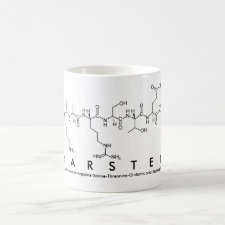
Authors: Gräfe A, Haupt K, Mohr GJ
Article Title: Optical sensor materials for the detection of amines in organic solvents.
Publication date: 2006
Journal: Analytica Chimica Acta
Volume: 565
Issue: (1)
Page numbers: 42-47.
DOI: 10.1016/j.aca.2006.02.034
Alternative URL: http://www.sciencedirect.com/science/article/B6TF4-4JCCHBG-1/2/b195e56b7180f1ffb488eed608644dc7
Abstract: A new optical polymer-based sensor was developed, which is able to recognize amines in organic solvents with high sensitivity. Thin polymer membranes were prepared and investigated, which contain a chromogenic functional dye (reactand) that shows a significant colour change during a reversible chemical reaction with the analyte. For that purpose the azo dye 4-trifluoroacetyl-4'-[N-(methacryloxyethyl)-N-(ethyl)amino]-azobenzene (CR-465) was synthesized, which contains a trifluoroacetyl moiety (receptor for interaction with amines) and in addition, a polymerizable methacrylate group. The methacrylate group links the dye covalently to the polymer matrix and the receptor recognizes the analyte via covalent binding. For immobilisation of the dye cross-linked methacrylate polymers with different composition were used. The highly cross-linked polymer network was stable against most organic solvents and exhibited enhanced stability against mechanical strain compared to plasticized PVC. The sensitivity of the reaction between the analyte and the dye was tailored by the choice of the solvent in which the analysis of the sensor layer was performed, with equilibrium constants for 1-butylamine ranging from 80 to 2000 M-1 in chloroform and DMSO, respectively. In toluene as the solvent, sensor layers typically exhibited equilibrium constants of 100 M-1 for 1-butylamine, 1300 M-1 for 1,4-diaminobutane and 20,000 M-1 for tris-(2-aminoethyl)amine. We have also investigated the cross-linked sensor layers with respect to molecular imprinting and did not find any enhancement in selectivity through imprinting in the presence of different analyte molecules
Template and target information: amines, 1-butylamine, 1,4-diaminobutane, tris(2-aminoethyl)amine
Author keywords: Trifluoroacetyl dyes, amines, molecular imprinting



Join the Society for Molecular Imprinting

New items RSS feed
Sign-up for e-mail updates:
Choose between receiving an occasional newsletter or more frequent e-mail alerts.
Click here to go to the sign-up page.
Is your name elemental or peptidic? Enter your name and find out by clicking either of the buttons below!
Other products you may like:
 MIPdatabase
MIPdatabase









